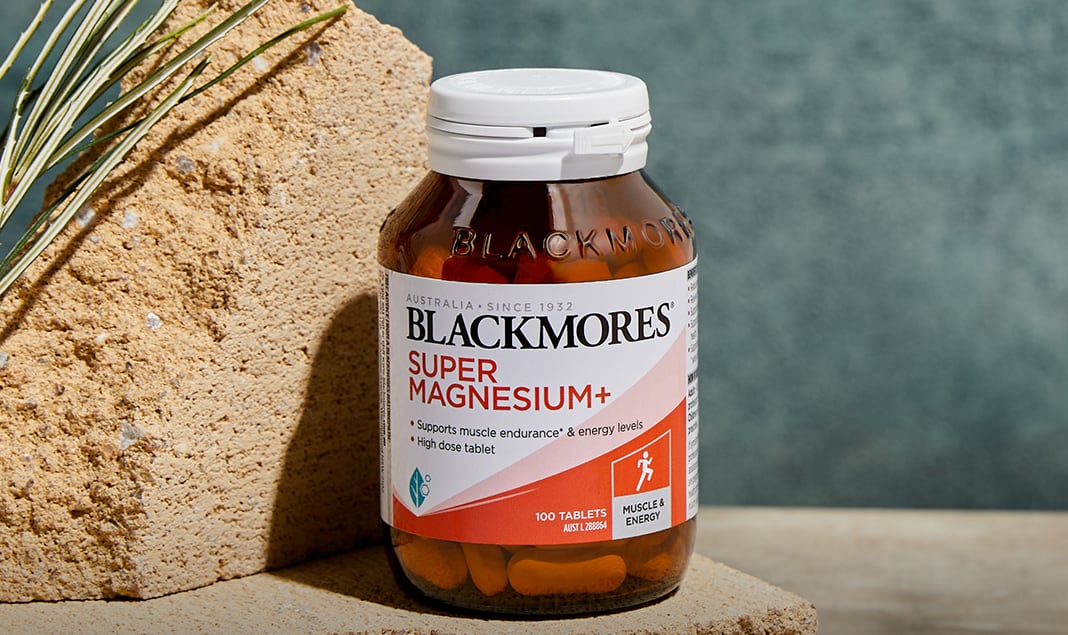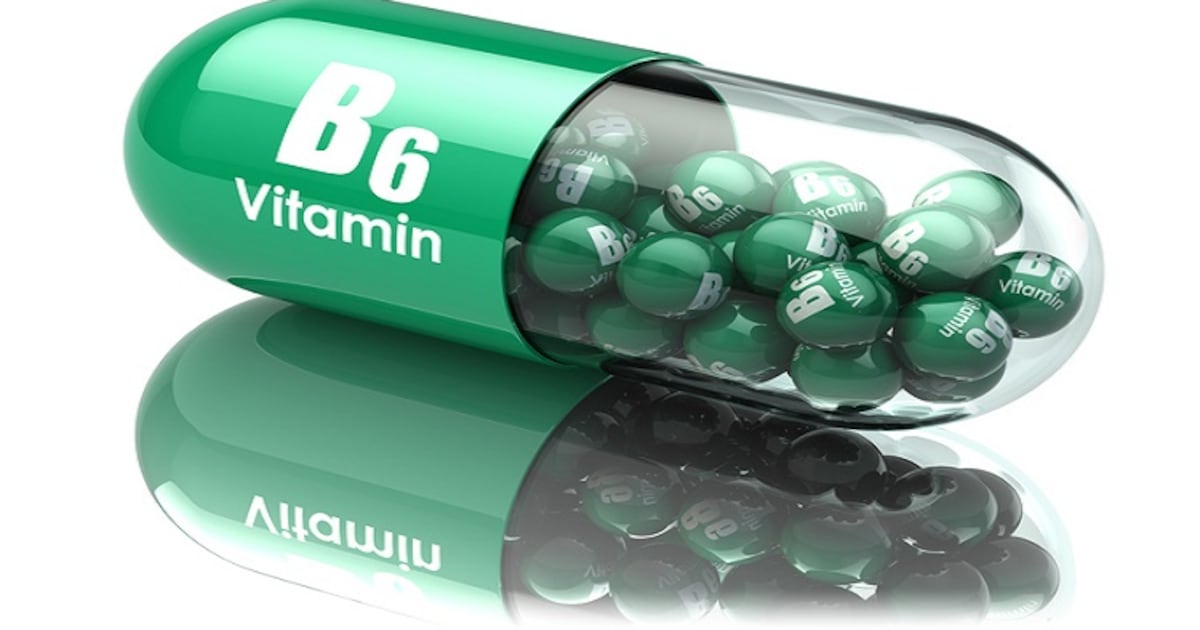The proposed class action by Polaris Lawyers claimed that lead plaintiff Dominic Noonan-O’Keeffe has been experiencing neuropathy caused by excessive B6 levels in the Blackmores supplements that he was taking.
The law firm claimed that Blackmores Super Magnesium+ – one of the products that Noonan-O’Keeffe had been taking – contained approximately 29 times the Recommended Daily Intake (RDI) of vitamin B6.
This is despite the product being within the limits permitted by the domestic regulator.
Based on the product labelling, the product is to “support muscle endurance, energy levels”, and also contains “high dose tablets.”
 Blackmores Super Magnesium + (Blackmores Facebook)
Blackmores Super Magnesium + (Blackmores Facebook)
Public database Australian Register of Therapeutic Goods (ARTG) showed that Blackmores Super Magnesium+ contains 60.78mg of pyridoxine hydrochloride – a form of vitamin B6.
This is within the current limits permitted by Australian regulator the Therapeutic Goods Administration (TGA), where complementary medicines which are available to the public without the need for any professional guidance can provide up to 200mg of pyridoxine, pyridoxal or pyridoxamine per Recommended Daily Dose (RDD).
Health supplements are regulated as complementary medicines in Australia.
However, the TGA is also considering to reduce the RDD of vitamin B6 in health supplements to 50mg and is in the midst of a public consultation.
Those containing vitamin B6 at RDD of between 50mg and 200mg per day will be considered as pharmacist only medicines available only via over-the-counter (OTC), while a RDD of more than 200mg will be prescription-only medicine.
The proposed stricter control is in response to reports of peripheral neuropathy arising from high dose vitamin B6 consumption. TGA’s public consultation ends on this Sunday, July 27.
In relation to the proposed class action against Blackmores, Nick Mann, founder and principal of Polaris Lawyers, said that the law firm has received approximately 900 responses so far. The law firm first announced that it was investigating a proposed class action against Blackmores in May this year.
Aside from Blackmores, a substantial number of people have raised claims against products from other brands.
Mann said the law firm would also investigate potential claims against other supplement companies as well.
NutraIngredients understands that these companies include other established brands from both Australia and multinational firms.
“Among those responses we have a substantial number of people who took supplements from other manufacturers.
“We will investigate potential claims against other supplement companies as our proposed action against Blackmores continues,” he said in response to queries from NutraIngredients.
“We’ve had common complaints in relation to vitamin B Complex, magnesium and zinc supplements,” he added.
Amid the ongoing saga, Blackmores emphasized that its products, including those containing vitamin B6, were developed in strict accordance to TGA’s regulatory requirements.
“At Blackmores, we are committed to the highest standards of product quality and consumer safety. All our products, including those containing vitamin B6, are developed in strict accordance with the regulatory requirements of the Therapeutic Goods Administration.
“This includes compliance with maximum permitted daily doses and the inclusion of mandated warning statements. We will ensure full compliance with the TGA’s final decision, prioritizing the safety of our products,” a Blackmores spokeswoman told NI.
RDD, RDI, and public education
It is important to distinguish between dosage levels permitted for complementary medicines taken for a therapeutic benefit, otherwise known as Recommended Daily Dose (RDD), and the Recommended Daily Intake (RDI).
In Australia, the RDI for vitamin B6 is set at 1.3 to 2mg per day for adults at different life stages. For instance, the RDI for lactating women is set at 2mg and 1.3mg for men between 31 and 50 years old.
The Upper Level of Intake (UL), on the other hand, is set at 50mg per day.
These figures are set by the National Health and Medicine Research Council (NHMRC).
The RDI reflects the average amount that is sufficient to meet the nutrient requirements of nearly all healthy individuals in a particular life stage and gender group, while the UL represents the highest daily intake considered safe for long-term use without significant risk of adverse effects.
The RDD, on the other hand, is product-specific and is an amount that is needed to produce a therapeutic effect based on scientific evidence.
“In Australia, listed complementary medicines, including vitamins, are regulated as medicines rather than food. There can be a difference between the recommended daily intake (RDI) and the amount needed for a therapeutic benefit as a medicine,” John O’Doherty, CEO of CMA said in response to queries from NI.
“If you are taking a supplement that contains vitamin B6, ensure you read the warnings provided on product labels.
“It is also important to be aware if you are taking multiple supplements that contain vitamin B6. And as always, if you have any questions or concerns, consult a healthcare professional,” he said.
According to the TGA, there are more than 1,500 preparations on the ARTG that contain vitamin B6 as an active ingredient.
“Doses used in the commonly available vitamin B6 preparations are often far higher than the physiological range or the level required in the diet.
“Currently, preparations providing up to 200 mg of pyridoxine, pyridoxal or pyridoxamine per RDD are available for self-selection without any professional guidance or oversight,” said the TGA in its proposal to lower the RDD of vitamin B6.
Ian Breakspear, researcher and also a senior learning facilitator – Naturopathy & Western Herbal Medicine – at the Torrens University Australia, also pointed out that the RDD was determined for meeting a therapeutic effect.
“The ‘recommended daily dose’ is product specific; it is the dosage stated on the label of a therapeutic product, remembering that even over-the-counter nutritional supplements are regulated as therapeutic goods in Australia.”
He said that the university supported the TGA’s proposal to lower the RDD of vitamin B6.
He also urged for public education campaigns and clearer labelling of vitamin B6 products.
“Torrens University Australia supports the regulator’s interim decision as being in alignment with the research evidence for both safety and efficacy of vitamin B6. We also support the Advisory Committee’s recommendations that the TGA consider public education campaigns, and clearer labelling of vitamin B6 containing products.
“Furthermore, when selecting supplements, we recommend that people consider consulting a properly trained health professional such as a naturopath or clinical nutritionist.
“Self-selecting nutritional supplements is not always the best option, and such health professionals can offer evidence-informed advice to improve safety and efficacy,” he told us.
Reports received by TGA
As of 4 June 2025, there were 174 reports of peripheral neuropathy, peripheral sensory neuropathy, small fibre neuropathy or chronic polyneuropathy for products containing vitamin B6 on the Database of Adverse Event Notifications (DAEN), said the TGA.
The majority of them (131 cases or 75%) were reported since 1 January 2023.
A breakdown showed that 36 cases were reported in 2023, 41 cases in 2024, and 54 cases reported in the first half of 2025.
NutraIngredients has reached out to TGA for comments.
Indonesia’s BPOM takes down online listing
The news have attracted the attention of Indonesian Food and Drug Monitoring Agency (BPOM), which said that it was coordinating with the relevant ministries to take down URLs of online marketplaces selling Blackmores Super Magnesium+.
The regulator said that the product was marketed exclusivity in Australia and was not for the Indonesian market, based on a search of registration data and its checks with PT Kalbe Blackmores Nutrition, the distributor of Blackmores products in Indonesia.
“BPOM is coordinating with the Australian Therapeutic Goods Administration (TGA) to obtain further information regarding this news.
“The Indonesian Food and Drug Authority (BPOM) has conducted a search of marketplaces in Indonesia and identified several online sales links for the product.
“BPOM has coordinated with the Ministry of Communication and Digital, the Indonesian E-Commerce Association (idEA), and relevant marketplaces detected selling the product to take down the sales links and submit a negative list / blocking request for the product,” the regulator said in a statement.
